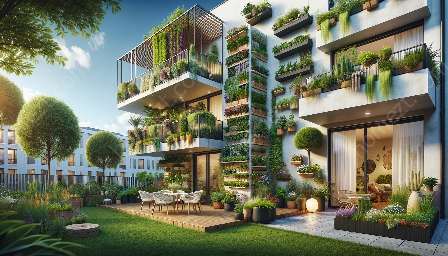Vertical gardening techniques are an exciting way to maximize space, bring greenery into urban environments, and enhance small yard and patio areas. This comprehensive guide explores various methods of vertical gardening, providing helpful tips and practical advice for creating stunning, space-saving gardens.
Why Vertical Gardening?
Vertical gardening has gained popularity as a solution to limited outdoor space in urban areas and small yards or patios. It offers numerous benefits, including:
- Space Optimization: Vertical gardens make efficient use of available space by utilizing vertical surfaces such as walls, fences, and trellises.
- Aesthetic Appeal: They add visual interest, texture, and color to otherwise bland walls or empty corners.
- Improved Air Quality: Plants contribute to better air quality by absorbing carbon dioxide and releasing oxygen.
- Accessibility: Vertical gardens can be designed to be within easy reach, making it convenient to tend to the plants and harvest fresh produce.
Compatible with Urban Gardening
Urban gardening often requires creative solutions due to limited outdoor space. Vertical gardening perfectly complements urban environments by allowing individuals to grow an abundance of plants in a compact area. Whether it’s a balcony, rooftop, or courtyard, vertical gardening techniques can help urban gardeners make the most of their space and create lush, green oases in the midst of the city.
Yard & Patio Compatibility
For those with small yards or patios, vertical gardening offers a way to cultivate a diverse range of plants without taking up valuable ground space. By utilizing walls, fences, or specialized vertical structures, such as towers or hanging planters, individuals can transform their outdoor areas into vibrant, green retreats.
Types of Vertical Gardening Techniques
1. Container Gardening
Utilizing containers is a popular way to create a vertical garden. By selecting the right types and sizes of containers, and using sturdy hooks or shelves, gardeners can easily affix them to walls or fences. This method is versatile and allows for a variety of plants to be grown, including flowers, herbs, and vegetables.
2. Trellising
Trellises provide a framework for training climbing plants, such as vines, beans, or tomatoes, to grow vertically. By installing trellises against walls or fences, gardeners can create a lush green backdrop and effectively utilize vertical space.
3. Living Walls
Living walls, also known as green walls, are stunning vertical gardens that consist of plants growing on a specially designed structure or frame. They offer a visually striking display and can be customized to suit various plant species, making them an ideal choice for both urban and yard-based gardens.
4. Vertical Planters
Vertical planters are specialized containers or structures designed to hold multiple plants in a vertical arrangement. These planters can be attached to walls, stacked together, or hung from overhead structures, providing a flexible and creative way to grow an array of plants in a small footprint.
Tips for Successful Vertical Gardening
- Choose the Right Plants: Select plants that are well-suited for vertical growth, such as climbers, vines, and compact varieties of herbs and vegetables.
- Ensure Proper Drainage: Adequate drainage is crucial for vertical gardens to prevent waterlogged soil and root rot. Use containers with drainage holes and consider using a lightweight, well-draining potting mix.
- Provide Structural Support: Ensure that your vertical garden structures are securely fastened and capable of supporting the weight of the plants, containers, and soil.
- Regular Maintenance: Monitor and maintain your vertical garden by watering regularly, fertilizing as needed, and pruning to keep plants healthy and thriving.
- Consider Micro-Irrigation Systems: Installing a drip irrigation system can help ensure consistent watering for your vertical garden, especially in urban or patio environments with limited access to natural rainfall and watering sources.
Conclusion
Vertical gardening offers an innovative and visually appealing way to bring greenery into urban environments and optimize small yard and patio spaces. By implementing the various techniques and tips outlined in this guide, individuals can create beautiful, functional vertical gardens that provide an abundance of benefits, from space optimization to improved air quality and aesthetic appeal.


